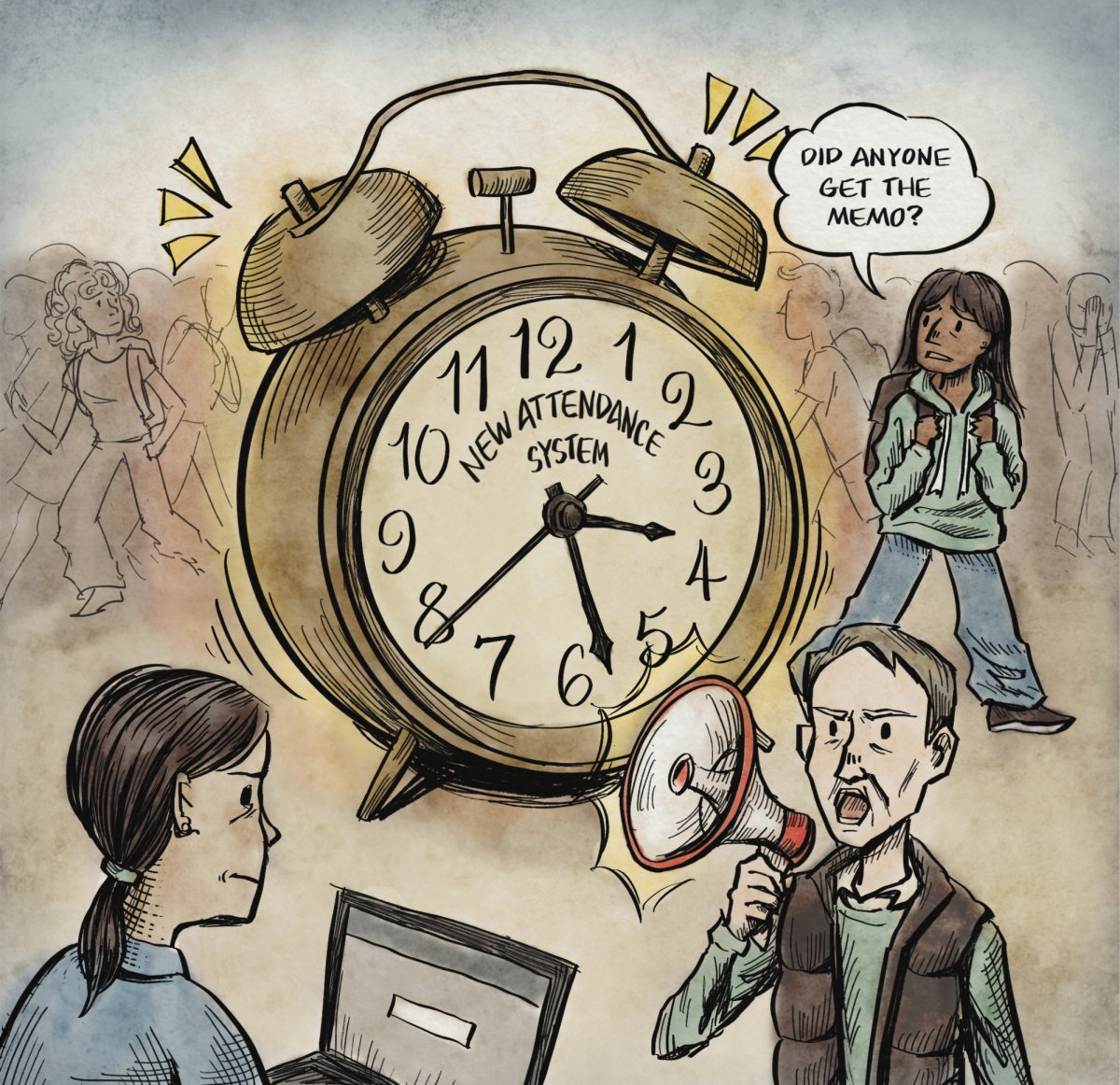To reduce classroom downtime and streamline student attendance, administration implemented a new attendance system at the start of this school year.
Instead of teachers manually taking attendance, students now must sign in digitally at the beginning of class by scanning their ID barcode or typing their ID on a designated Chromebook. Teachers can also track bathroom breaks with the new system which limits hall passes to seven minutes and up to three students per class at a time.
Despite good intentions, The Campanile thinks the new system is an ineffective strategy to optimize class time and should be discontinued.
A recurring theme among recent district policies has been an absence of timely communication with teachers.
Although the scan-in system was beta-tested starting last April, many teachers said they were unaware of its details until just a few days before school began. This pattern was also seen last year; teachers were not consulted — and largely unaware — when the late-start Monday policies were announced.
Due to this lack of communication and collaboration on the part of the district, the new attendance system has failed to meet efficiency expectations. Students arriving at the same time, occasionally faulty scanners and late teachers often result in delays in logging in and falsely registered tardies and absences.
Students also sometimes forget to sign in, creating extra work for teachers who then have to manually take attendance afterward.
When teachers don’t catch these mistakes, students must go through the hassle of getting their attendance corrected and cleared by the attendance office through a paper pass system.
Not all teachers even use the new system, a testament to its inefficacy and lack of administrative attempts to get teacher buy-in and feedback. While we acknowledge the system does work well for some teachers, others have told The Campanile that it makes it harder to learn student names and more difficult to track class attendance. Some teachers are even requiring students to arrive five minutes early to sign in, which seems like a regression from our previous attendance system. While problems with the system may dissipate with time, overall it is inconvenient for both students and many teachers.
We do commend the PAUSD and the Paly administration’s desire to combat chronic tardiness and unregulated in-class breaks, and the system does show promise on those fronts. Computer science teacher Roxanne Lanzot said she noticed chronically tardy students making a greater effort to arrive on time, attributing this to the fact that students cannot negotiate their tardiness with a computer attendance system.
But here is another example of a lack of clear communication. Though students are not marked tardy for spending longer than seven minutes on the bathroom break, many mistakenly think they will be. The administration’s failure to communicate this has left many students, especially those with health accommodations, feeling rushed or stressed by the alleged seven-minute bathroom and water time limit imposed on students.
This limit can also be seen as an invasion of privacy; a student’s bathroom break is their personal business, and the system could introduce uncomfortable discussions addressing the length of the breaks of those who need more time. These time limits within the system also seem arbitrary — journalism classes, for example, will eventually have 10-minute passes for interviews during class time, yet this duration is often insufficient as interviews can take upwards of 30 minutes.
In an effort to balance the advantages of the system with overcoming its flaws, The Campanile proposes a compromise. Use the new attendance system exclusively for tardies and bathroom breaks and explicitly remove a time limit from the digital passes.
Regardless of the administration’s intentions, one thing is certain: Teachers and students alike are tired of the lack of timeliness and communication from the district and Paly admin. Restoring trust with the staff and student body is essential for the success of any new administrative policy.

